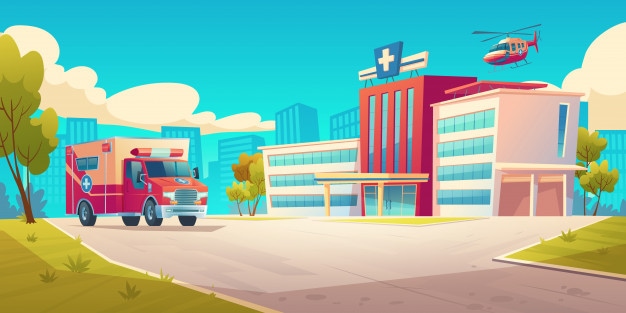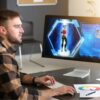
How 3D Medical Animation Impacts the Medical Industry? Let’s talk about it
With the advancement of technology, virtual reality has become an integral part of every industry, including the medical industry. More and more medical facilities and professionals have seen the benefits of using 3D medical animation in education, medical marketing and patient communication.
This cutting-edge technology has played a crucial role in the era of modern medicine. The technical advances have made it easier to achieve high-quality and easy-to-understand animations to explain health and medical-related topics.
The Advent of Modern Animation
Gone are the days when medical students struggle to relate 2D drawings and blackboard illustrations to reality. Today, modern 3D animations are being used in medical schools, research facilities, laboratories, and hospitals worldwide to further achieve the goal of better health. This advancement in medical technology provided excellent benefits in medical training and education. Modern animations bring procedures, processes, concepts and devices to life. The 3D animation makes everything easy, from student training to patient education to surgery preparation.
For instance, medicine students can take advantage of 3D medical animation for a wide range of medical topics, like human anatomy, disease-studying, surgical processes and more. With more understandable visuals, it becomes easier for students to get a clearer picture of what’s to expect during the actual practice.
Similarly, new hires in medical facilities can speedily get on board with this improved training. The animation can serve as e-learning so that they can undergo orientation and training anytime, anywhere. The 3D animations can also be available as resources that staff can review anytime when they feel like they need a refresher for certain tasks.
Medical experts and healthcare providers are exploring other potential uses of modern animation in their industry to further assist them with everything health-related.
Why You Need 3D Medical Animation
3D animation provides endless benefits in the world of medicine. They are widely used in the modern age of the medical industry for all the good reasons, such as:
-
Effective Lesson Explanation
A picture says a thousand words, but a video can tell millions—this is especially true with medical 3D animations. 3D animation can explain complex topics and procedures more accurately and effectively than books and words. Imagine explaining to students the procedure of, say, a heart surgery while playing a detailed, step-by-step 3D video of an actual surgery versus narrating them only in words.
-
Better Engagement
Whether you are educating students or patients, you get better engagement with your audience with animated materials. 3D animations are entertaining because of their captivating visual presentations. People tend to pay more attention when they are presented with easy-to-understand materials. With improved engagement, students learn faster, and patients are more proactive at taking care of their health.
-
Enhanced Recall
Humans are naturally visual species. People easily remember when they learn things visually. With so many details presented in a 3D animation, people remember details better than other forms of visual aids. That’s why brands invest more in visual advertising and materials for them to stick in people’s minds.
-
Professional Approach
The high-quality animations that this technology boosts any medical establishment’s professional façade. It creates high-quality marketing materials for pharmaceutical companies, hospitals, and other medical facilities, boosting their credibility in their industry.
Medical 3D Animation for Your Institution
Medical 3D may sound intimidating, perhaps making you wonder how to incorporate a comprehensive animation into your institution. That is where medical animation services come into the picture. Austin Visuals medical animation services can work with you to provide premier 3D animation. Our team has worked with some renowned medical institutions with different specialties and has provided them with interactive 3D visual materials for all sorts of medical purposes.




